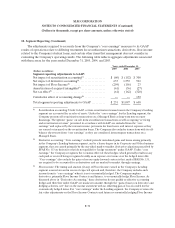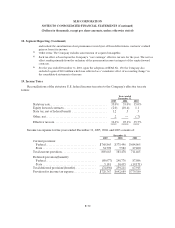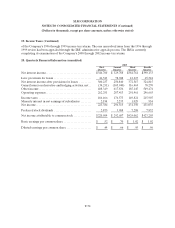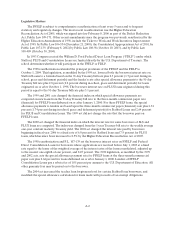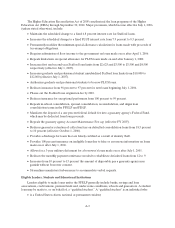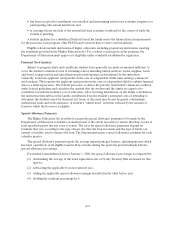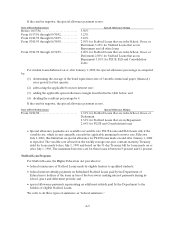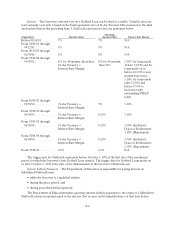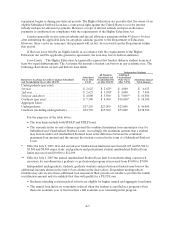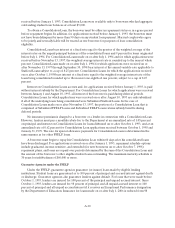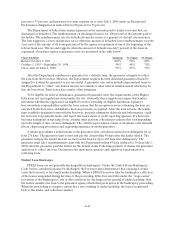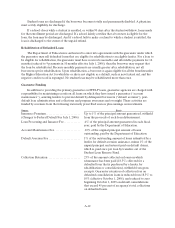Sallie Mae 2005 Annual Report Download - page 201
Download and view the complete annual report
Please find page 201 of the 2005 Sallie Mae annual report below. You can navigate through the pages in the report by either clicking on the pages listed below, or by using the keyword search tool below to find specific information within the annual report.A-3
The Higher Education Reconciliation Act of 2005 reauthorized the loan programs of the Higher
Education Act (HEA) through September 30, 2012. Major provisions, which become effective July 1, 2006
(unless stated otherwise), include:
•Maintains the scheduled change to a fixed 6.8 percent interest rate for Stafford loans.
•Increases the scheduled change to a fixed PLUS interest rate from 7.9 percent to 8.5 percent.
•Permanently modifies the minimum special allowance calculation for loans made with proceeds of
tax-exempt obligations.
•Requires submission of floor income to the government on loans made on or after April 1, 2006.
•Repeals limitations on special allowance for PLUS loans made on and after January 1, 2000.
•Increases first and second year Stafford loan limits from $2,625 and $3,500 to $3,500 and $4,500
respectively (effective July 1, 2007).
•Increases graduate and professional student unsubsidized Stafford loan limits from $10,000 to
$12,000 (effective July 1, 2007).
•Authorizes graduate and professional students to borrow PLUS loans.
•Reduces insurance from 98 percent to 97 percent for new loans beginning July 1, 2006.
•Phases out the Stafford loan origination fee by 2010.
•Reduces insurance for exceptional performers from 100 percent to 99 percent.
•Repeals in-school consolidation, spousal consolidation, reconsolidation, and aligns loan
consolidation terms in the FFELP and FDLP.
•Mandates the deposit of a one percent federal default fee into a guaranty agency’s Federal Fund,
which may be deducted from loan proceeds.
•Repeals the guaranty agency Account Maintenance Fee cap (effective FY 2007).
•Reduces guarantor retention of collection fees on defaulted consolidation loans from 18.5 percent
to 10 percent (effective October 1, 2006).
•Provides a discharge for loans that are falsely certified as a result of identity theft.
•Provides 100 percent insurance on ineligible loans due to false or erroneous information on loans
made on or after July 1, 2006.
•Allows for a 3-year military deferment for a borrower’s loans made on or after July 1, 2001.
•Reduces the monthly payment remittance needed to rehabilitate defaulted loans from 12 to 9.
•Increases from 10 percent to 15 percent the amount of disposable pay a guaranty agency may
garnish without borrower consent.
•Streamlines mandatory forbearances to accommodate verbal requests.
Eligible Lenders, Students and Educational Institutions
Lenders eligible to make loans under the FFELP generally include banks, savings and loan
associations, credit unions, pension funds and, under some conditions, schools and guarantors. A student
loan may be made to, or on behalf of, a “qualified student.” A “qualified student” is an individual who
•is a United States citizen, national or permanent resident;




